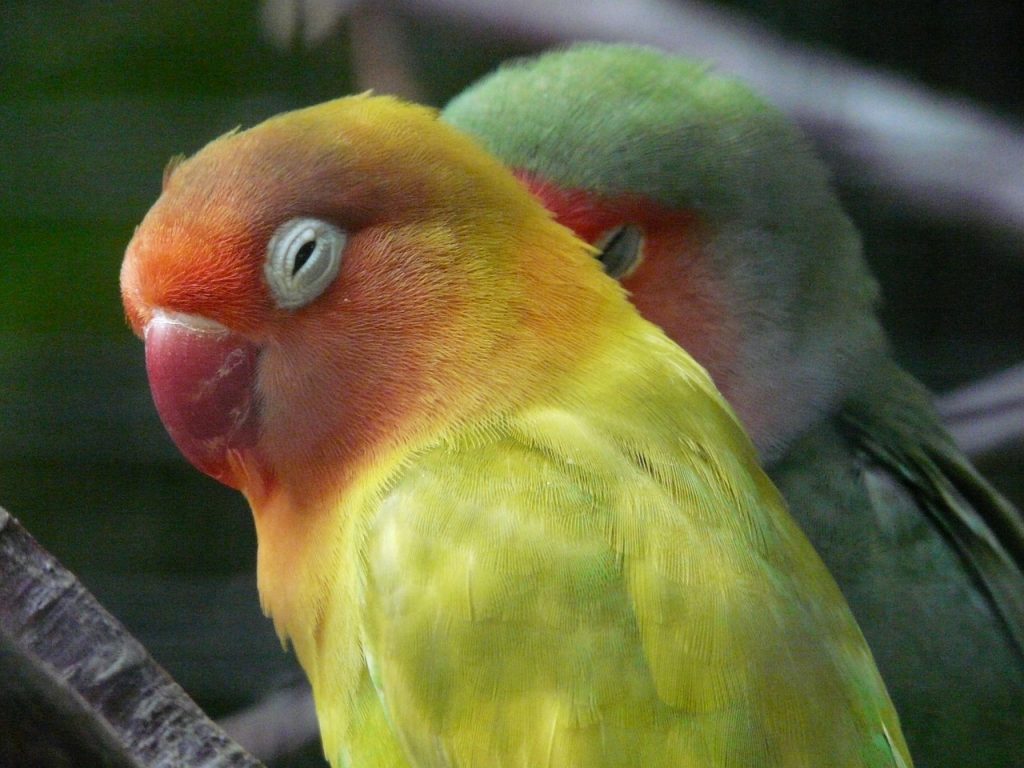Getting Lovebirds as Pets

Consider a pet lovebird if you enjoy the bold personality and charm of Amazon parrots, but you don’t feel comfortable with larger birds. Lovebirds make fascinating pets, even if it’s difficult. If you are open to learning how to care for them, you might be able to tolerate occasional nipping to remind you who’s in charge.
 Lovebirds can make great pets
Lovebirds can make great pets
Lovebirds can be a bit different from other species, so it is important that you get to know them before you decide on the right species.
General Lovebird Personality & Temperament
Lovebirds make wonderful pets. However, they are often more aggressive than cockatiels or parakeets. They are full of personality and can be very affectionate with their loved ones. They can also be very stubborn so someone with some experience in keeping birds is a better option.
Keep your lovebirds happy
Many lovebirds birds will not remain tame unless they are handled daily. It’s best to start with a fully weaned baby lovebird. Spend some time talking to it, holding it, and gently stroke its feathers. Even though tame birds are fond of attention, if they don’t get enough, they might become frustrated and refuse to allow you to handle them.
Lovebird Singles or Couples
One of the most common perceptions about lovebirds is that they must live in pairs. This may be because two banded birds will perch close to one another and play preen. One lovebird can still live happily with its owner if it has the chance to bond.
One rule of thumb: Two lovebirds that bond with each other may not be as friendly to their human companion. A single pet will be more likely to foster a close bond between you and your lovebird. Consider keeping your lovebirds in a group to avoid loneliness if you don’t feel like taking care of them.
Lovebirds may be prone to aggression
Lovebirds can sometimes become aggressive, so it is important to keep them away from other species. They are known to attack other lovebirds when they are introduced to their nest. It is best to allow potential cage mates to get to know one another in side-by-side cages before you attempt to keep them together.
Males that love birds make better pets
While there are always exceptions males tend to be gentler than females. Females are the most aggressive of the species and often become quite nippy after reaching sexual maturity.
Lovebird Physical Characteristics
There are nine kinds of lovebirds. These lovebirds are often available as pets and include the Fischer, masked, and peach-faced lovebirds. They are approximately 5- to 6-1/2 inches long and all three are small-sized birds. These parrots look different than other small ones like parakeets because of their stocky frames, short tail feathers, and stocky tail feathers.
Housing a Lovebird
Every lovebird needs a safe, spacious home. These guidelines will help you better understand your pet’s needs.
Lovebird Cages
Rectangular cages provide the most space for lovebirds to fly as if they were in the wild. A cage measuring 30″ Lx18″ Wx18″H is a good size, but it is possible to get larger cages if the spacing between the bars is less than five-eighths.
Lovebirds need a good night’s sleep, which can last between 10 and 12 hours.
Perches
Three-fourths of an inch to one and a half inches is the ideal size range for a lovebird’s perch. It is best to use several hardwood perches, which are not easily chewed. One cement conditioning perch is also recommended to keep the nails and eyes trimmed.
Lovebird Grooming
The grooming needs of a lovebird are quite straightforward.
Routine Trimming and Showering
Lovebirds enjoy taking a dip after drinking and often do this right after receiving freshwater. If you’re trying to save your pet’s water, you might give him a separate bath. A cement perch or avian vet might be required to trim your pet’s toenails.
Wing Trimming
It is controversial to wing trim your pet, but it can decrease the chances of him escaping. There is a fine line between trimming the feathers just enough to hinder full flight and too many to cause your pet to fall or injure. To ensure that trimming is done properly, it is best to leave it to your vet.
Health Care
Although your pet may not have any major health issues, it is possible to maintain good health by providing routine veterinary treatment.





